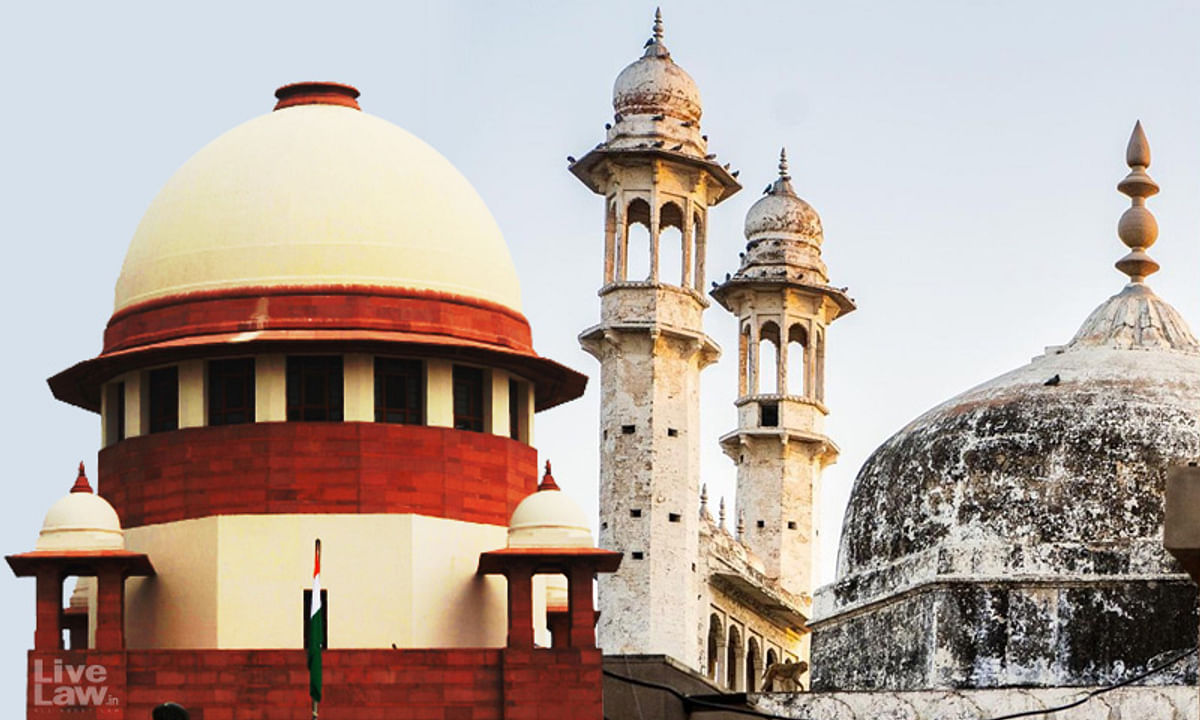Lucknow: A bench headed by Chief Justice of India (CJI) DY Chandrachud stayed the Varanasi district court’s order till July 26. Which directed the ASI to conduct a “scientific” survey of the mosque complex. The top court also asked the mosque committee to approach the Allahabad High Court against the district court’s order. The CJI took note of Solicitor General Tushar Mehta’s submission that no excavation work would be done in the mosque premises for at least a week.
What was the order of the Varanasi court?
On Friday (July 21), a Varanasi court asked for a “scientific investigation-survey-excavation” of the mosque complex by the ASI. District and Sessions Judge Ajay Krishna Vishwesha asked the ASI to conduct a ground penetrating radar survey just below the three domes of the building and if necessary, carry out excavations. The court “directed the director of the ASI to conduct a detailed scientific investigation using GPR survey, excavation, dating method and other modern techniques of the present structure to ascertain whether it was built over an already existing structure of a Hindu temple”.
The ASI was also directed to scientifically investigate the age and nature of construction of the western wall of the building and conduct underground GPR survey of all the basements and if necessary, carry out excavations. The court also asked the ASI to prepare an inventory of all artefacts found in the building, analyze their contents and conduct scientific tests. Dating should be done to ascertain the age and nature of construction. The court asked the ASI director to ensure that no damage is done to the “structure standing on the disputed land”.
How did the court take this matter?
The Varanasi court was dealing with a petition filed by four Hindu women petitioners. The petition sought the right to worship Maa Shringar Gauri on the outer wall of the Gyanvapi Masjid complex, located next to the Kashi Vishwanath Temple in Varanasi. In its order, the court clarified that the survey will not cover the wuzu eating or bathing area, which was sealed last year on the orders of the Supreme Court after the Hindu side claimed that they had identified a Shivling there. However, the Muslim side argued that the object found was a fountain. Thereafter, the court directed that the survey proceedings be videographed and a report be submitted before August 4.
The Hindu side argues that the mosque was built on the site of the original Kashi Vishwanath temple. The Muslim side maintains that the mosque was built on Waqf premises and the Places of Worship (Special Provisions) Act, 1991 prohibits changing the character of any place of worship. Because it came into existence on August 15, 1947. However, this was not the first time that the matter reached the court. Following an order from the Allahabad High Court, the Varanasi district court agreed to hear the present petition for the ASI survey on May 16 this year.
What was the order of Allahabad High Court?
On May 16, 2023, the Allahabad High Court ordered a “scientific survey” including carbon dating of the “Shivling”. The High Court gave this order after hearing the petition of the petitioner, Lakshmi Devi and three others. The petition challenged the Varanasi District Judge’s order dated October 14, 2022 rejecting his application for scientific survey and carbon dating of the “Shivling”. In their petition before the High Court, the petitioners prayed for proper survey involving the petitioners or Ground Penetrating Radar (GPR) and excavation to ascertain the nature of the construction beneath the Shivalingam discovered on 16 May 2022.
Why was a videographic survey done?
On April 8, 2022, hearing a petition filed by five local women, Civil Judge (Senior Division), Varanasi, Ravi Kumar Diwakar ordered a court-appointed commission to conduct a survey of the Maa Shringar Gauri site at the Kashi Vishwanath Temple-Gyanvapi Masjid site. The commission was directed to “prepare videography of the proceedings” and submit its report. After this, the survey of the campus was done for three days and ended on May 16, 2022. The inspection was done in the presence of the court appointed advocate, lawyers for both the parties, all the concerned parties and officials. It was on this day that the object claimed by the Hindu side to be a Shivling was found. Means according to the Hindu side Shivling was found.
How did the Supreme Court come forward in this matter?
The Anjuman Intezamia Masjid Committee, which manages the Gyanvapi Masjid, moved the top court, arguing that the proceedings were an attempt to change the religious character of the mosque. The Places of Worship Act, 1991 prohibits any place of worship to have a religious character coming into existence on August 15, 1947. On May 20, 2022, the Supreme Court transferred the case to the district judge, noting the “complexity of the issues involved in the civil suit”. The Supreme Court later said that it would intervene only after the District Judge decides on the preliminary aspects of the case. Thereafter, in November 2022, the Supreme Court extended its interim direction to secure the area of the Gyanvapi complex where the “Shivling” was claimed to be found. There were instructions to protect the rights of Muslims to reach there and offer prayers without obstructing or restricting it until further orders.

